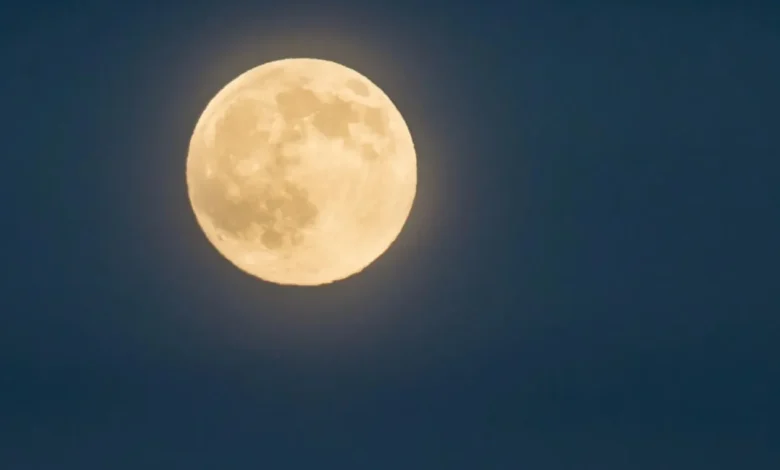The Moon Is Beautiful Isn’t It – A Timeless Symbol of Love, Mystery, and Reflection

The night sky has always held a quiet power over the human soul. Among the infinite stars, nothing captivates us quite like the moon. It’s not just a celestial body orbiting Earth—it’s a source of poetry, symbolism, science, and emotion. The phrase “the moon is beautiful isn’t it” echoes softly across languages and cultures, suggesting sentiments far deeper than its simplicity implies. But why is the moon so universally admired? And what lies behind the romanticism we attach to its silent glow?
In this article, we’ll journey through the science, symbolism, literature, and cultural relevance of the moon, exploring why it’s so cherished across time and space. From Japanese love confessions to NASA’s explorations, the moon is more than just a rock in the sky—it’s a mirror of our human condition.
The Celestial Companion of Earth
The moon is Earth’s only natural satellite, approximately 384,400 km away from us. Its gravity is responsible for the tides that influence marine life, the rhythm of ecosystems, and even human folklore. Unlike the stars, the moon is close enough to reveal its detailed face to the naked eye—its craters, shadows, and phases are visible even through a basic telescope.
Scientifically speaking, the moon was likely formed from the debris of a massive collision between Earth and a Mars-sized body billions of years ago. It has since become a stable satellite, playing a crucial role in Earth’s axial tilt and climate stability.
Yet for all its geological importance, our fascination with the moon extends far beyond science.
A Cultural Obsession: The Moon in Myth and Legend
Across cultures, the moon has been worshipped as a deity, used to guide time, and romanticized in countless tales. In Ancient Greece, the moon was associated with the goddess Selene. In Hindu mythology, it is known as “Chandra,” and holds astrological importance. The Chinese Mid-Autumn Festival celebrates the moon as a symbol of reunion and harmony.
Japanese culture offers a poetic twist to the phrase “I love you,” often replacing direct expressions of affection with subtle ones like “tsuki ga kirei desu ne”—translated as “the moon is beautiful, isn’t it?” This gentle phrase says far more than its literal meaning. It’s an indirect confession of love—elegant, reserved, and emotionally charged. It suggests that, like the moon, the speaker’s feelings are quiet but deeply present.
The Moon in Art and Literature
From Shakespeare to Haruki Murakami, authors and poets have drawn inspiration from the moon. In Shakespeare’s A Midsummer Night’s Dream, the moon plays a critical role in setting the dreamlike atmosphere. In romantic poetry, it symbolizes longing, melancholy, and ethereal beauty.
Van Gogh’s painting Starry Night depicts the moon as a radiant celestial force, glowing amid swirling stars. In modern cinema and music, the moon often represents solitude, introspection, and desire.
Indeed, when we whisper the moon is beautiful isn’t it, we’re invoking generations of artistic expression wrapped in starlight.
Why Do We Find the Moon Beautiful?
Beauty is subjective, but the moon’s appeal is nearly universal. Is it the soft light that gently illuminates the darkest nights? Is it the familiarity of seeing the same face in the sky every evening? Or is it the way it changes—waxing and waning like our moods?
The moon taps into something deeply emotional. It is both constant and changing. Its surface is cold and barren, yet from Earth, it looks serene and alive. It becomes a canvas for our thoughts, dreams, and yearnings.
There’s also something deeply human about projecting our feelings onto the moon. When we say the moon is beautiful isn’t it, we’re not just commenting on a visual experience—we’re often revealing inner thoughts we might not say otherwise.
The Moon and Romance – Love in Silence
Few celestial phenomena are as tied to human romance as the moon. Lovers have gazed at the moon for centuries, finding comfort in the idea that even when apart, they’re looking at the same glowing orb. It bridges distances and time zones, and becomes a silent messenger of love.
In literature and cinema, moonlit nights are settings for first kisses, emotional breakthroughs, and whispered confessions. The moon softens reality. It slows time. It allows vulnerability.
Perhaps that’s why saying the moon is beautiful isn’t it can mean so much more. It’s a confession wrapped in cosmic elegance.
The Moon in Modern Life and Science
Despite its romanticism, the moon has been at the heart of some of humanity’s greatest scientific achievements. In 1969, Neil Armstrong became the first human to walk on the moon, stating, “That’s one small step for man, one giant leap for mankind.” The moon became a symbol of exploration, ambition, and progress.
Today, space agencies like NASA and private companies like SpaceX are planning missions to return humans to the moon. The upcoming Artemis missions aim to establish a long-term presence, possibly laying the groundwork for future Mars expeditions.
Yet even amid this cutting-edge science, the moon retains its allure. Astronauts often describe a surreal, almost spiritual feeling when they see Earthrise from the lunar surface.
It seems that no matter how much we learn about it, the moon retains its mystery.
The Moon Is Beautiful Isn’t It – More Than Just a Phrase
Let’s pause on this phrase—“the moon is beautiful isn’t it”—and unpack it again.
It’s not merely an observation. It’s often used to convey something deeper than words. A hidden affection. A gentle vulnerability. A bridge between silence and speech.
For example, in anime and literature, the phrase is used in quiet, emotionally loaded moments where a direct confession would feel too sudden or heavy. It’s as if the speaker allows the moon to speak on their behalf, reflecting the feeling back to the listener.
Using this phrase shows emotional intelligence and poetic sensitivity. It’s a cultural key that unlocks a moment of intimacy without breaking the beauty of the silence.
The Moon’s Phases and Our Inner Seasons
The moon doesn’t just stay full or hidden—it cycles through phases. New moon. Waxing crescent. First quarter. Waxing gibbous. Full moon. Then back again.
Each phase has meaning. For farmers, the full moon once dictated harvest cycles. For spiritual practitioners, it symbolizes renewal, manifestation, and introspection. Even in modern times, people track the moon for energy shifts, sleep patterns, and emotional awareness.
There’s something comforting in knowing the moon always comes back around. No matter how dark the night, the full moon will rise again. Maybe that’s why it resonates so deeply with the human experience. We, too, go through phases. We wax and wane. But like the moon, we persist, orbiting our own inner suns.
When Words Fail, the Moon Speaks
How often have you looked up at the moon and felt a sense of peace or wonder that words couldn’t quite express? That’s the quiet power of the moon. It doesn’t need to shine the brightest—it just needs to be there. Consistent. Gentle. Watching.
For people dealing with loss, separation, or change, the moon becomes a point of emotional anchoring. It reminds us that even from across the world, someone we miss might be looking up at the same sky.
It’s in those moments we whisper to ourselves or to others, the moon is beautiful isn’t it—not because of the light it reflects, but because of the emotions it mirrors.
Conclusion:
In a world that often moves too fast and speaks too loudly, the moon offers a kind of quiet clarity. Its beauty is not flashy. It doesn’t seek attention. And yet, it has inspired millions to stop, look up, and feel something—whether that’s awe, love, longing, or comfort.
The phrase the moon is beautiful isn’t it is more than a poetic sentence. It’s an emotional shorthand, a spiritual whisper, a shared secret between the sky and the soul. It captures the essence of unspoken love, timeless longing, and cosmic connection.
As we move forward into an increasingly digital age, let’s not forget the simple act of looking up. Because whether you’re alone on a balcony, walking with someone you love, or across continents from a dear friend—the moon is always there.
And truly, the moon is beautiful, isn’t it?
FAQs About the Moon and Its Meaning
Q1: Why is the moon considered beautiful in so many cultures?
The moon’s soft glow, ever-changing phases, and constant presence in the night sky make it a symbol of beauty, reflection, and emotional connection across the globe.
Q2: What does the phrase “the moon is beautiful isn’t it” really mean?
While it seems like a simple statement, it often conveys deeper, hidden affection. In Japanese culture, it’s a poetic way of saying “I love you” without directly expressing it.
Q3: How has the moon influenced literature and art?
The moon is a recurring symbol in poetry, novels, paintings, and music. It often represents longing, mystery, romance, and introspection.
Q4: What are the moon’s spiritual meanings?
Spiritually, the moon is seen as a symbol of cycles, emotions, transformation, and feminine energy. Many use it to guide meditations, rituals, and personal growth.
Q5: Why do we feel emotionally connected to the moon?
The moon’s quiet presence, emotional symbolism, and role as a shared visual experience create a sense of personal and collective connection, especially during emotional moments.





